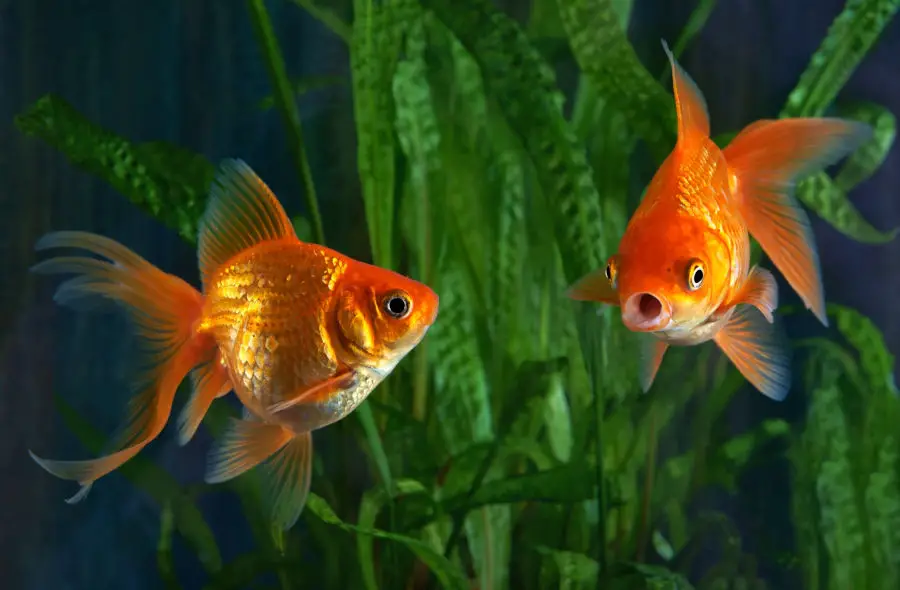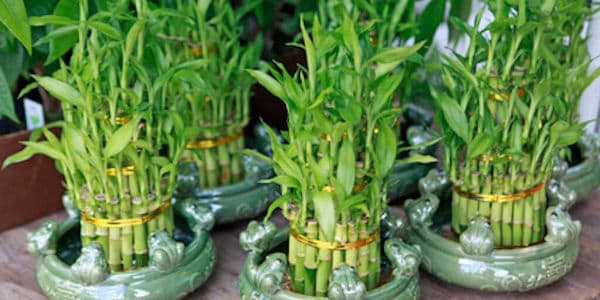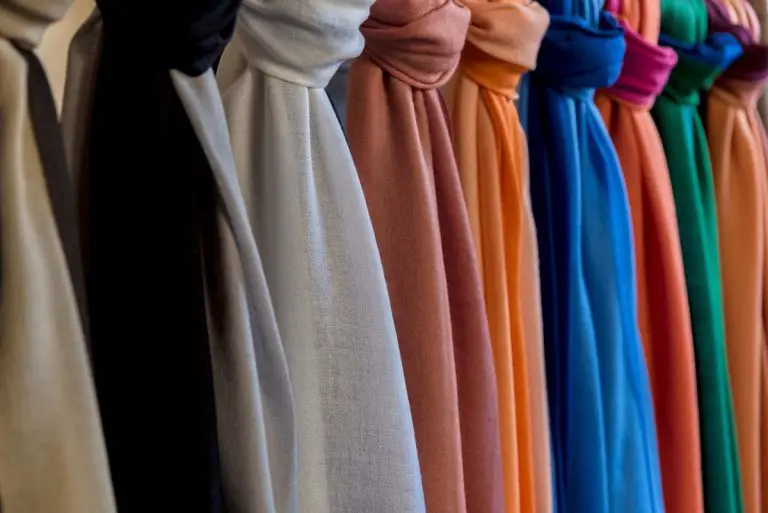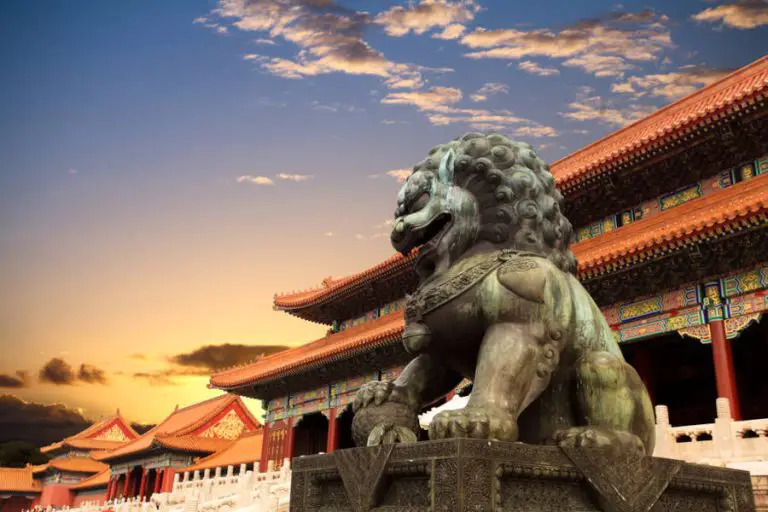Goldfish hold a special place in Chinese culture, symbolizing prosperity, abundance, and good fortune. Their vibrant colors, graceful movements, and serene presence make them more than just ornamental fish—they are living emblems of wealth and success. In Chinese, the word for goldfish (金鱼, jīn yú) sounds like “gold” (金, jīn) and “abundance” (余, yú), reinforcing the belief that keeping goldfish can attract financial luck and continuous prosperity.
This linguistic connection gives rise to the traditional Chinese saying 年年有余 (nián nián yǒu yú), which translates to “May you have abundance year after year.” Because of this auspicious wordplay, goldfish have become a powerful emblem of financial success and continuous prosperity in Chinese culture.
Throughout history, goldfish have been a cherished symbol in Chinese art, literature, and even daily life. From ancient scroll paintings to modern home aquariums, these fish embody positive energy and a promising future. Their association with wealth is so strong that they are commonly gifted during Chinese New Year as a way to wish someone financial growth and stability.
Why Goldfish Are More Than Just Beautiful Pets
While goldfish are admired for their beauty, their cultural significance goes far beyond aesthetics. In traditional Chinese beliefs, animals are often linked to cosmic energies, and goldfish are seen as powerful conduits for attracting good fortune. Their continuous movement in water symbolizes a never-ending flow of wealth and happiness, making them a popular choice for home and office décor.
Additionally, goldfish are believed to promote harmony and balance. Their calm nature can create a soothing atmosphere, reducing stress and enhancing well-being. This is why they are often kept in homes, temples, and even businesses—to invite prosperity while fostering a peaceful environment.
The Deep Cultural Significance of Goldfish
Goldfish have long been associated with wealth and affluence in China. Their shimmering golden and red scales resemble gold coins, reinforcing the belief that they attract financial luck. In ancient times, wealthy families and scholars kept goldfish in elaborately designed ponds and ceramic bowls as a sign of status and prosperity.
Beyond material wealth, goldfish symbolize an abundant life in a broader sense—happiness, fertility, and success. Their graceful movements in water reflect the smooth and steady flow of good fortune, making them a popular choice for home décor, Feng Shui arrangements, and even business settings. Many Chinese households and establishments display goldfish paintings or aquariums to invite luck and financial growth.
The Connection Between Goldfish and Prosperity in Ancient China
The link between goldfish and prosperity can be traced back to the Tang Dynasty (618–907 AD), when the first gold-colored carp were selectively bred. These rare and valuable fish were initially reserved for members of the imperial court. By the Song Dynasty (960–1279 AD), goldfish breeding expanded to the general public, and they quickly became a beloved symbol of good fortune.
During the Ming (1368–1644 AD) and Qing (1644–1912 AD) dynasties, goldfish were often gifted to nobles and scholars as a blessing for success and longevity. Ornamental goldfish ponds became popular features in traditional Chinese gardens, reflecting a harmonious balance between nature, wealth, and serenity. The presence of goldfish in these settings was believed to attract prosperity while promoting spiritual tranquility.
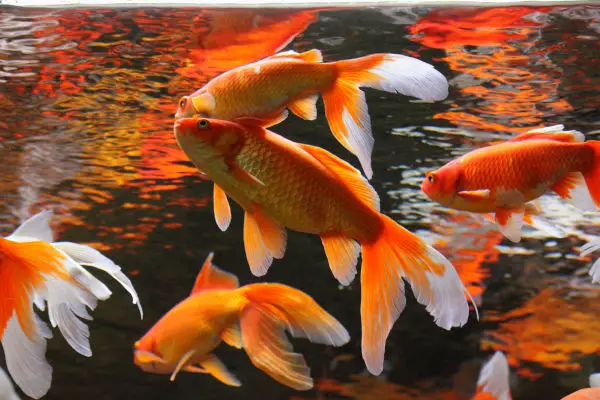
Goldfish in Chinese Folklore and Legends
Goldfish are deeply embedded in Chinese folklore, often appearing in myths and legends associated with transformation, luck, and divine blessings. One of the most famous tales involves a humble goldfish that transforms into a 龙鱼 (lóng yú), or dragon fish, after overcoming obstacles and swimming against the current. This story reflects the idea of perseverance leading to success, inspiring many people to strive for greatness despite challenges.
Another legend tells of goldfish bringing luck to a poor fisherman. According to the story, a fisherman once caught a beautiful golden fish and, instead of selling it, released it back into the river. That night, he dreamt of a divine spirit blessing him with endless prosperity. The next day, his fortunes changed—his fishing nets were filled with an abundance of fish, and he lived a prosperous life thereafter.
These tales reinforce the belief that goldfish are more than just decorative creatures—they are bearers of luck, wealth, and positive transformation. Even today, goldfish motifs frequently appear in Chinese New Year decorations, wedding gifts, and business logos, symbolizing endless abundance and success.
Goldfish and Feng Shui: Attracting Positive Energy
In Feng Shui, goldfish are highly valued for their ability to attract prosperity and positive energy. Their association with wealth stems from their golden and red hues, which symbolize good fortune and financial success. Water, the element in which goldfish thrive, represents the flow of abundance in Feng Shui principles. When combined, the dynamic movement of goldfish in water creates a continuous circulation of wealth and good luck.
Many Feng Shui practitioners recommend keeping a goldfish aquarium in homes or businesses to amplify prosperity and ward off misfortune. The belief is that a healthy and active goldfish signifies a thriving, prosperous life, while a well-placed aquarium serves as a magnet for positive energy.
The Role of Goldfish in Balancing Yin and Yang Energy
Goldfish play a vital role in balancing yin (passive, receptive energy) and yang (active, dynamic energy) within a space. Water, a yin element, provides calmness and relaxation, while the vibrant colors and movement of the fish bring yang energy, adding vitality and dynamism. Together, they create a harmonious and balanced environment, essential for overall well-being and success.
A properly positioned goldfish tank can restore equilibrium in homes and offices, preventing an excess of either yin or yang energy. If a space feels too stagnant or dull, goldfish introduce motion and life. Conversely, in an overly active or chaotic setting, the water’s gentle movement helps stabilize energy flow, fostering peace and clarity.
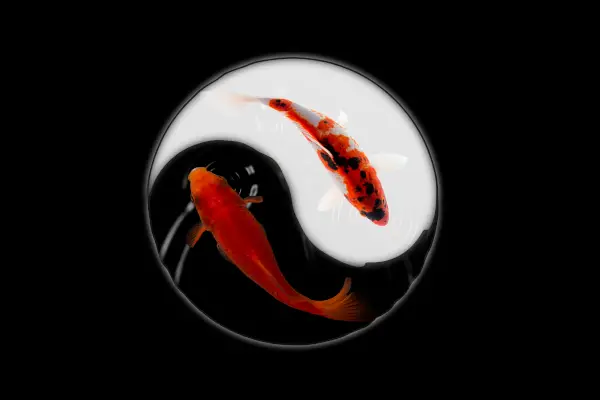
How Goldfish Enhance the Flow of Wealth and Happiness
Goldfish are believed to act as conduits of wealth, attracting financial success and happiness when placed correctly. According to Feng Shui, the best location for a goldfish aquarium is in the southeast sector of a home or business, known as the Wealth Corner. Another powerful placement is the north sector, associated with career growth and professional success.
The number of goldfish in a tank also plays a significant role. A common Feng Shui practice is to keep eight goldfish (a lucky number symbolizing prosperity) and one black goldfish (which absorbs and neutralizes negative energy). This combination is thought to maximize wealth attraction while offering protection from misfortune.
Beyond financial success, goldfish contribute to emotional well-being. Watching their gentle movements has a calming effect, reducing stress and promoting a sense of happiness. Their presence in a home creates an uplifting atmosphere, enhancing the overall quality of life.
Goldfish as a Remedy for Negative Energy
In Feng Shui, goldfish are often used to dissolve negative energy, or Sha Chi, which can arise from sharp corners, clutter, or external influences like harsh road alignments. An aquarium placed in the right location can act as a powerful cure, redirecting and transforming harmful energy into positive vibrations.
Goldfish are also considered effective in neutralizing bad luck caused by Feng Shui afflictions, such as the presence of the Five Yellow Star (a misfortune-bringing energy in annual Feng Shui charts). In such cases, a water feature with goldfish can help counteract negative effects and restore balance.
Additionally, if a household experiences frequent financial difficulties or emotional conflicts, introducing a goldfish tank is believed to shift the energy in a more favorable direction. However, maintaining a clean and well-kept aquarium is crucial—stagnant or dirty water can have the opposite effect, creating blockages rather than abundance.
Related reading: Arowana: The Dragon Fish That Brings Wealth and Prosperity – Opens in new tab
Choosing the Right Goldfish for Good Luck
Not all goldfish are considered equally auspicious in Feng Shui. Certain breeds are believed to attract greater wealth, harmony, and positive energy due to their colors, body shapes, and symbolic meanings. The most recommended goldfish breeds for good luck include:
- Dragon Eye Goldfish (Celestial and Telescope Goldfish) – Their large, protruding eyes symbolize wisdom, vision, and foresight, making them a great choice for business owners and those seeking career success.
- Oranda Goldfish – Known for their distinctive head growth, orandas represent abundance and status. Their elegant appearance is associated with financial prosperity and high social standing.
- Ranchu Goldfish – A popular breed in Chinese culture, ranchus symbolize longevity and stability, making them ideal for families and those seeking a peaceful life.
- Comet and Common Goldfish – These active, fast-moving fish represent continuous success and progress. Their high energy attracts dynamic wealth flow, making them perfect for businesses.
While these breeds are particularly auspicious, any healthy and vibrant goldfish can bring positive energy if properly cared for.
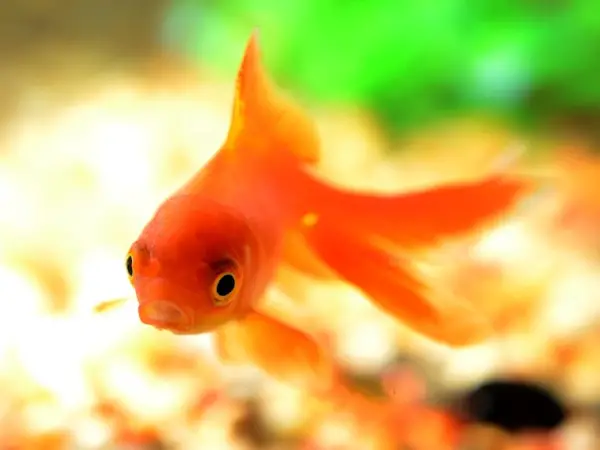
The Power of Red and Gold-Colored Goldfish
In Feng Shui, color plays a significant role in determining energy flow. Red and gold are especially powerful because they symbolize luck, wealth, and happiness in Chinese culture.
- Gold-Colored Goldfish – Resembling gold coins, these fish are directly linked to financial success and abundance. Keeping gold-colored goldfish is believed to enhance prosperity and ensure a steady flow of wealth.
- Red Goldfish – Red is a color of luck, protection, and celebration in Chinese traditions. Red goldfish are thought to ward off negative energy while attracting joy and good fortune.
- Black Goldfish – Though less common, black goldfish serve a unique purpose in Feng Shui. They absorb and neutralize negative energy, acting as a protective force against bad luck.
A combination of gold, red, and one black goldfish creates a balanced energy system, enhancing prosperity while offering spiritual protection.
The Significance of the Number of Goldfish in a Tank
The number of goldfish in an aquarium influences the energy it generates. Feng Shui practitioners follow specific number combinations to maximize good fortune:
- One Goldfish – Represents independence, strength, and determination.
- Three Goldfish – Symbolizes growth, creativity, and happiness.
- Six Goldfish – Associated with career success and opportunities.
- Eight Goldfish – The most auspicious number, signifying infinite wealth and abundance.
- Nine Goldfish (Eight Red + One Black) – A powerful combination for prosperity and protection. The eight red fish attract wealth, while the black fish absorbs negativity.
Avoid keeping four goldfish, as the number four (四, sì) sounds similar to the word for death (死, sǐ) in Chinese, making it an unlucky number.
Related reading: The Significance of Aquarium in Feng Shui: Creating Harmony, Wealth, and Wellness – Opens in new tab
What Happens When a Goldfish Dies? Understanding the Spiritual Meaning
The death of a goldfish in Feng Shui is often seen as a symbolic sacrifice, where the fish absorbs negative energy or misfortune meant for its owner. Instead of considering it bad luck, many believe that the fish has fulfilled its purpose of protecting the household.
When a goldfish dies, it’s important to dispose of it respectfully—either by burying it or returning it to natural water sources. Replacing the fish with a new one ensures that the flow of positive energy continues. Additionally, regularly maintaining the aquarium’s cleanliness is essential, as stagnant or dirty water can disrupt harmony and financial luck.
Goldfish in Chinese Art and Symbolism
Goldfish have been a beloved subject in Chinese art for centuries, often depicted in traditional paintings as symbols of prosperity, abundance, and harmony. Renowned artists from the Song Dynasty (960–1279 AD) onward incorporated goldfish into their brushwork, capturing their graceful movements with fluid strokes that mirrored the philosophy of balance and flow in nature.
One of the most popular painting themes is “Goldfish and Lotus”, where the fish swim among lotus flowers, representing purity, harmony, and continuous wealth. Another common motif is “Nine Goldfish”, which symbolizes long-lasting prosperity, as the number nine (九, jiǔ) sounds like “long-lasting” in Chinese. These paintings were often gifted to scholars, merchants, and newlyweds as blessings for success and happiness.
Even today, traditional goldfish paintings are displayed in homes and businesses to enhance Feng Shui energy and attract wealth. The combination of water and goldfish in art serves as a visual representation of financial flow and abundance.
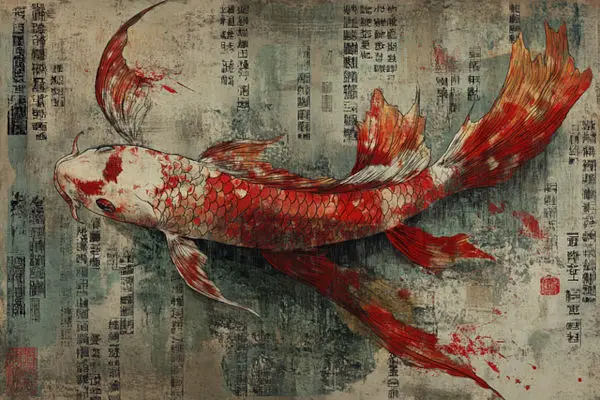
Goldfish Motifs in Porcelain and Decorative Items
Goldfish designs have been intricately woven into Chinese porcelain, ceramics, and decorative items for centuries. During the Ming (1368–1644 AD) and Qing (1644–1912 AD) dynasties, goldfish were frequently painted on fine blue-and-white porcelain, symbolizing elegance and prosperity. These porcelain pieces, often in the form of vases, plates, or teapots, were treasured by the imperial court and wealthy families.
In addition to porcelain, goldfish motifs appear in silk embroidery, lacquerware, jade carvings, and even furniture. They are commonly used in home décor to invite good fortune and happiness. Many Chinese households still display goldfish-adorned vases and wall hangings in their wealth corners to enhance financial luck.
Goldfish in Modern Chinese Fashion and Jewelry
The timeless symbolism of goldfish has also found its way into modern Chinese fashion and jewelry. Goldfish-shaped pendants, earrings, and bracelets made from gold and jade are popular accessories, worn as lucky charms for wealth and protection. Red and gold enamel goldfish brooches and necklaces are especially popular among business professionals, as they are believed to enhance financial success.
In contemporary fashion, designers incorporate goldfish patterns into silk dresses, scarves, and handbags, merging traditional symbolism with modern aesthetics. Goldfish motifs are also frequently featured in high-end jewelry collections, particularly in feng shui-inspired designs, where goldfish figures are embedded with precious stones like citrine and ruby to enhance their wealth-attracting properties.
From ancient artwork to modern luxury fashion, the goldfish remains a powerful and enduring symbol in Chinese culture, continually evolving while retaining its deep-rooted meanings of prosperity and good fortune.
Want to learn more about Feng Shui? Take a look at these Courses and Books – Aff.link
Goldfish in Chinese Festivals and Celebrations
Goldfish hold a special place in Lunar New Year celebrations, symbolizing wealth, abundance, and surplus for the year ahead. Their association with the phrase 年年有余 (nián nián yǒu yú), meaning “May you have surplus year after year,” makes them a common motif in New Year decorations, artwork, and festive foods.
During the New Year, families display goldfish-themed paper cuttings, paintings, and embroidered textiles in their homes, particularly in the wealth corner to invite financial prosperity. Goldfish patterns also appear on red envelopes (红包, hóngbāo), which are filled with money and given to children and loved ones as blessings for financial success.
In some regions of China, people release live goldfish into ponds or rivers as a symbolic act of setting good fortune free, ensuring that blessings continue to flow throughout the year. While this practice is less common today due to environmental concerns, the tradition reflects the deeply rooted belief that goldfish bring continuous luck and prosperity.
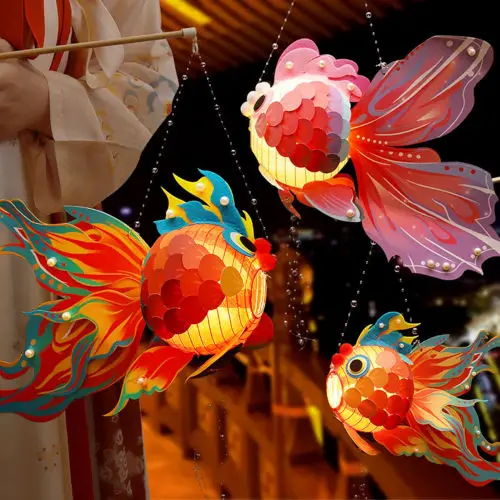
Goldfish as Gifts for Weddings and Special Occasions
Goldfish are also a meaningful gift for weddings and celebrations, symbolizing harmony, fertility, and lifelong prosperity. In traditional Chinese weddings, goldfish motifs often appear on bridal dresses, jewelry, and even wedding cakes, representing the couple’s wish for a prosperous and happy marriage.
Some families give goldfish-themed ornaments or live goldfish to newlyweds as a token of fertility and abundance, as goldfish are known for their ability to reproduce quickly. A pair of goldfish, particularly in red and gold colors, is considered a powerful symbol of marital bliss and unity.
Beyond weddings, goldfish-inspired gifts are commonly exchanged during milestone events such as housewarming parties, business openings, and birthdays. A beautifully crafted goldfish painting or jade carving is believed to attract wealth and success for the recipient, making it a cherished and thoughtful gift.
Goldfish Symbolism in the Mid-Autumn Festival
During the Mid-Autumn Festival, which celebrates family reunion and prosperity, goldfish motifs often appear in lanterns, mooncakes, and decorative items. The festival, held under the full moon, emphasizes harmony and abundance—values closely linked to the symbolism of goldfish.
Goldfish-shaped lanterns are particularly popular during the festival, especially among children. These lanterns, crafted in vibrant red and gold hues, are carried in lantern parades as symbols of good fortune and happiness. The light from the lanterns is believed to illuminate the path to success and prosperity, much like the flowing movement of goldfish in water.
Additionally, some families prepare fish-shaped mooncakes and desserts to reinforce the theme of abundance. These delicacies, often filled with sweet lotus paste or red bean, serve as both festive treats and auspicious symbols for continued wealth and joy.
Goldfish-Themed Food and Sweets in Chinese Culture
Goldfish symbolism extends beyond decorations and gifts—it is also deeply embedded in Chinese cuisine. Many festive dishes are crafted in the shape of goldfish to represent luck and prosperity.
Some popular goldfish-inspired foods include:
- Goldfish-shaped steamed buns (鱼形包子, yú xíng bāozi) – Sweet or savory buns molded into the form of goldfish, symbolizing abundance in meals.
- Glutinous rice cakes (年糕, niángāo) – Sometimes shaped like goldfish, these cakes represent rising fortune and success in the new year.
- Goldfish candy and pastries – Often made from sugar, chocolate, or jelly, these treats are especially popular during festivals, as they bring sweetness and joy into the household.
Even in everyday cuisine, whole fish dishes (often red snapper or carp) are served as a symbol of prosperity and completeness. While not necessarily goldfish, the association between fish and wealth (鱼 = 余, surplus) ensures that fish dishes remain an essential part of celebratory banquets.
From New Year’s decorations to wedding gifts and festival treats, goldfish continue to play a significant role in Chinese celebrations, reinforcing themes of luck, abundance, and prosperity in every aspect of life.
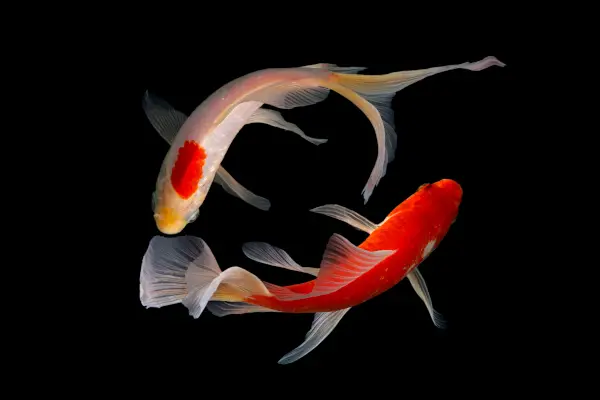
Goldfish in Chinese Spirituality and Buddhism
In Chinese spirituality and Buddhism, goldfish symbolize transformation, freedom, and enlightenment. Their ability to swim effortlessly through water represents the fluidity of life and the possibility of personal growth. Just as goldfish move with the current, individuals are encouraged to adapt to life’s changes and embrace their spiritual journeys.
Goldfish are often associated with breaking free from limitations, whether physical, emotional, or spiritual. Unlike caged birds or tethered animals, goldfish swim freely, symbolizing liberation from suffering and the pursuit of a more enlightened state of being. In this sense, they remind people to let go of negative attachments and allow their lives to flow naturally.
The Connection Between Goldfish and Koi in Buddhist Beliefs
Goldfish share a close connection with koi fish, which hold profound significance in Buddhist teachings. In many Buddhist stories, koi are known for their perseverance and transformation, as seen in the famous legend of koi swimming upstream to become dragons. While koi are often associated with strength and ambition, goldfish represent contentment, peace, and spiritual abundance.
In Buddhist art and symbolism, goldfish are sometimes depicted alongside lotus flowers, reinforcing their role as symbols of purity and spiritual awakening. The lotus grows from muddy waters, yet it remains untainted—just as goldfish, despite their simple existence, embody the virtues of patience, simplicity, and inner wisdom.
Buddhists believe that keeping goldfish in a pond or aquarium can bring harmony and positive energy, much like koi. The Two Golden Fish (双鱼, shuāng yú) are also one of the Eight Auspicious Symbols of Buddhism, representing happiness, prosperity, and the ability to navigate life’s challenges with ease.
The Significance of Goldfish in Chinese Temples and Monasteries
Goldfish are commonly found in Buddhist temples and monasteries throughout China, where they are kept in ornamental ponds and lotus pools. These ponds serve both a decorative and spiritual purpose, as they create a peaceful atmosphere for meditation and reflection.
Many temples maintain goldfish ponds as a symbol of abundance and compassion. Monks and visitors feed the fish, an act that reflects the Buddhist principle of generosity (布施, bùshī), which teaches that giving brings blessings and good karma. Some temples also have koi and goldfish together, reinforcing the idea of balance between material success (koi) and spiritual fulfillment (goldfish).
Goldfish in temples are often considered sacred creatures, protected and cared for by monks. It is believed that releasing goldfish into temple ponds can generate positive karma, especially when done with a sincere heart and the intent to free the fish from suffering.
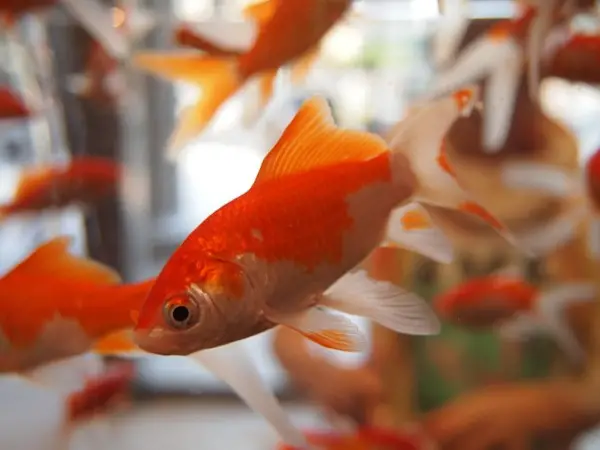
How Goldfish Are Used in Spiritual Practices and Prayers
In Chinese Buddhism and Taoism, goldfish are used in various rituals, prayers, and spiritual practices:
- Releasing Goldfish for Good Karma – Some devotees practice life release (放生, fàngshēng), where they purchase live goldfish from markets and set them free in ponds or rivers. This act is believed to accumulate good karma and express compassion for all living beings. However, modern environmental concerns emphasize releasing fish only into appropriate, natural habitats.
- Goldfish as Offerings – Goldfish images or figurines are sometimes placed on altars and shrines as offerings to deities associated with wealth and wisdom, such as Guanyin (观音), the goddess of mercy.
- Goldfish in Meditation and Feng Shui – Some people meditate while observing goldfish, believing that their calm, rhythmic swimming can help cultivate mindfulness and inner peace. Feng Shui practitioners also use goldfish to balance energy and attract positive vibrations.
Whether in temples, homes, or spiritual practices, goldfish continue to serve as a powerful symbol of freedom, prosperity, and enlightenment in Chinese Buddhism and beyond.

Modern-Day Influence of Goldfish in China
Goldfish remain one of the most popular aquarium pets in China, with millions of households keeping them for both aesthetic and symbolic reasons. Many Chinese families believe that having goldfish in the home attracts wealth, prosperity, and positive energy, making them a staple in modern interior decor.
Aquariums and fishbowls are often placed in living rooms, offices, and storefronts, following Feng Shui principles to enhance financial luck. Homeowners frequently consult Feng Shui experts to determine the best placement for their fish tanks, ensuring that the energy (Qi) flows harmoniously.
Goldfish are also favored for their low maintenance and long lifespan, making them an accessible and meaningful pet for people of all ages. Advances in aquarium technology have further fueled their popularity, allowing enthusiasts to keep elaborate, high-tech setups that highlight the beauty of these fish while maintaining optimal water conditions.
The Growing Trend of Goldfish-Themed Feng Shui Practices
In recent years, there has been a resurgence in goldfish-themed Feng Shui practices, as more people seek to improve their financial and emotional well-being through traditional Chinese wisdom. Goldfish are now a popular choice in both home and office Feng Shui, with experts recommending:
- Keeping eight goldfish and one black fish in a tank – The number eight (八, bā) symbolizes wealth, while the single black fish absorbs negative energy, creating balance.
- Placing aquariums near business entrances – This practice is believed to attract customers and financial success, making it a common sight in restaurants and shops.
- Using goldfish-themed water fountains – Flowing water and swimming goldfish together enhance the movement of Qi, promoting prosperity and harmony.
This modern interpretation of ancient Feng Shui principles has led to an increase in specialized goldfish breeding, with high-end varieties such as Dragon Eye and Red Cap Oranda being sought after for their auspicious appearances.
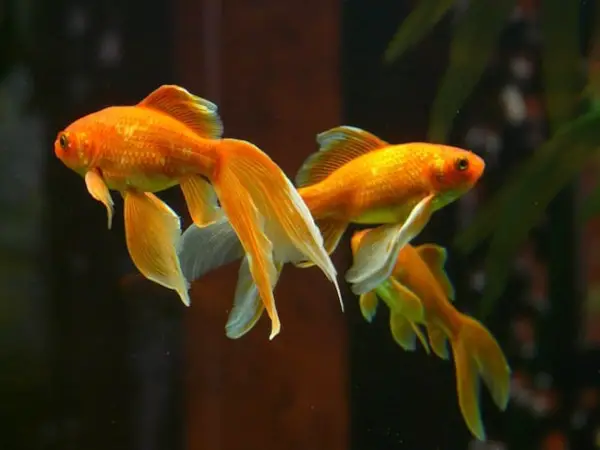
Conservation Efforts and Ethical Considerations in Goldfish Keeping
As the demand for goldfish grows, so do concerns about ethical breeding and environmental impact. The mass production of ornamental goldfish has led to:
- Overcrowded fish farms, where fish may suffer from poor water quality and genetic deformities.
- Invasive species risks, as some people release unwanted goldfish into natural ecosystems, disrupting local biodiversity.
- Short-lived pet ownership trends, where goldfish are purchased for decoration but not given proper long-term care.
In response, Chinese conservationists and animal welfare advocates are promoting responsible fishkeeping practices, encouraging owners to:
- Buy from ethical breeders who prioritize fish health and humane breeding methods.
- Provide proper aquarium conditions, including sufficient space, clean water, and a balanced diet.
- Educate new owners on the long lifespan and care needs of goldfish, discouraging impulse purchases.
Some organizations have also launched “Goldfish Release Awareness” campaigns, urging people to avoid releasing goldfish into lakes and rivers, as they can outcompete native fish species. Instead, they advocate for adopting or rehoming unwanted fish through responsible channels.
End Words
Goldfish have a profound and enduring presence in Chinese culture, symbolizing prosperity, transformation, and harmony. From their spiritual significance in Buddhism to their role in Feng Shui, art, and festivals, these graceful creatures have captivated the imagination of generations.
Today, goldfish continue to inspire both modern design and ancient practices, bringing luck and abundance into homes and businesses alike. As they swim through the currents of time, goldfish remain a timeless symbol of positive energy, encouraging us to embrace the flow of life, cultivate wealth, and find balance in every aspect of our lives.
Want to learn more about Feng Shui? Take a look at these Courses and Books – Aff.link
Additional resources for further exploration
Stay in Touch
 Join our newsletter by using the forms on this website or click here!
Join our newsletter by using the forms on this website or click here! Follow us on Google News
Follow us on Google News Follow us on Facebook
Follow us on Facebook
Featured Image from Depositphotos

